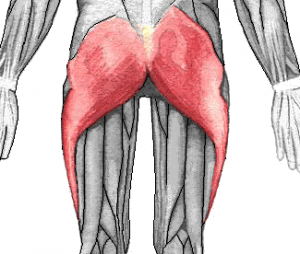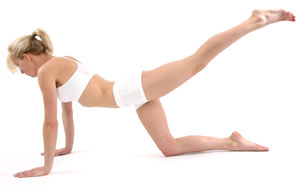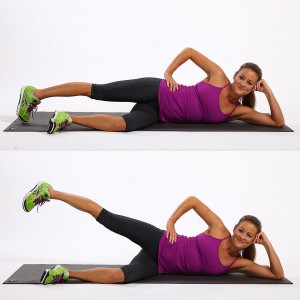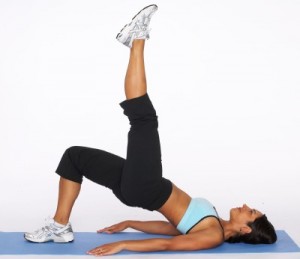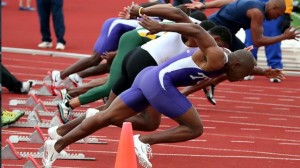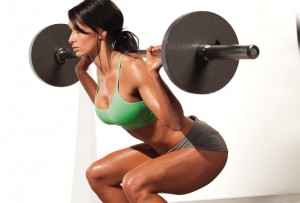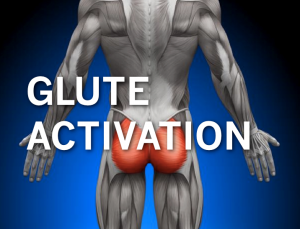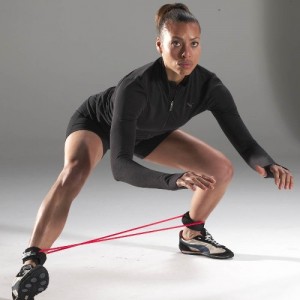By Chris and Eric Martinez, CISSN. We’ve always thought it was funny when women would tell us that they can stay in bikini shape year-around and still make gains in their physiques. We would sit there and ask them, “So how exactly do you plan on doing this?” They would always 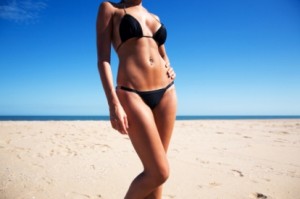 reply with, “Oh just be strict on my diet and ‘eat clean,’ low calories, low carb it, lots of cardio, and stick to my high rep training to stay toned.”
reply with, “Oh just be strict on my diet and ‘eat clean,’ low calories, low carb it, lots of cardio, and stick to my high rep training to stay toned.”
We kid you not, every answer was something along those lines and we wouldn’t critique their responses because we knew that these were A) The type that got their info from Gwyneth Paltrow out of a magazine and B) The type of women that would not listen to a word that came out of our mouths and would just nod their pretty little faces and go on about their business in their Lululemon yoga pants.
We decided to do some research on this, ask some fellow experts in the field, use our real world practice, experience, and results from our female clients, and write this article. We want to inform you if being in bikini shape year-round is safe, smart, realistic, healthy, and then some. You ready to find out if you can stay in bikini shape year-around and still make progress in your body?
Crashing Your Metabolism
Let’s start this off with crashing your metabolism or a more appropriate word would be ‘Metabolic Adaptation’ through excessive calorie restriction and excessive aerobic training volumes. What’s metabolic adaptation you ask? The way we define this is your metabolism is permitted from losing body fat unless you starve yourself. It’s a lack of weight loss disproportionate to your calorie intake.
A common example of this would be a bikini or figure competitor. They would be on an  extremely low calorie diet, anywhere form 600-1,000 calories and doing a high volume of low intensity aerobic exercise, anywhere from 2-3 hours a day and up to 5-6 times a week, and eventually they would end up not being able to drop body fat.
extremely low calorie diet, anywhere form 600-1,000 calories and doing a high volume of low intensity aerobic exercise, anywhere from 2-3 hours a day and up to 5-6 times a week, and eventually they would end up not being able to drop body fat.
“The reason they can’t drop body fat is because their body adapts to the low calorie intake and the high calorie output so much to where they don’t get any caloric burn from exercise. They also have very little thermogenic effect from foods and low basal metabolic rates. Their metabolism is blunted, so they don’t have any type of metabolic cushion to work with and thus they can’t lose adipose tissue.” says Layne Norton.
(Note: For more info on Metabolic Adaptation click here)
When you’re in a severe caloric restriction and doing high volumes of aerobic training, which 99% of the time means trying to attain low body fat levels so you can fit in that poke a dot bikini, you have to understand that maintaining this shape is very difficult, unhealthy, and most of the times unrealistic.
Is it Possible to be in Bikini Shape Year-Round?
In our opinions, there are four ways that you can realistically stay in bikini shape and still improve your physique, more on that in a moment. We went ahead and asked expert Alan Aragon what ways he thought someone could stay bikini ready year-around:
“Whether or not it’s realistic to stay in bikini shape all year-round depends on just how ‘in-shape’ we’re talking about.  While hard work and dedication is obviously involved, the look of women on fitness magazine covers is largely based on genetics. In many cases, it’s a matter of having won the genetic lottery, plus getting some extra help from drugs.”
While hard work and dedication is obviously involved, the look of women on fitness magazine covers is largely based on genetics. In many cases, it’s a matter of having won the genetic lottery, plus getting some extra help from drugs.”
We agree with some of Alan’s points; however we feel there are some other ways that you can realistically stay in bikini shape and still improve your physique:
- You are genetically gifted and have all the right things going for you
- Having an ectomorphic body type with a greyhound type (very fast) metabolism
- Extra help from drugs
- Implement Reverse dieting
Since we all aren’t genetic freaks, don’t have sky rocketing metabolisms, and last time we checked drugs were illegal, let’s focus on the last one, implementing reverse dieting.
Enter Reverse Dieting
When you implement reverse dieting you want to focus on improving your metabolic capacity so that you can handle a higher level of calories for gaining muscle mass, without putting on excessive body fat. When you can fully maximize your metabolic capacity, this will play a key role in dropping body fat when you’re in a caloric restriction aka dieting for that bikini.
For example, who’s going to have an easier time losing fat?
Subject A) Person who maintains their body weight on 3000 calories or
Subject B) Person who maintains their body weight on 1500 calories
It’s subject ‘A’ because they have a higher metabolic capacity. Subject ‘A’ has more caloric cushion to work with when it comes to dropping calories over the course of time.
Reverse dieting will also help with re-storing your metabolism to a more suitable rate to your body. In order to do this you must slowly, deliberately, and in a controlled fashion add in calories to your diet.
Reverse dieting could also possibly help lose body fat because your metabolism becomes stimulated. If you want to drop fat, you have to have the metabolic capacity to do so and if you’re constantly maintaining your weight in bikini shape around 1,000 calories then you aren’t going to have the metabolic cushion to lose fat nor will you have the caloric intake to gain muscle mass and make improvements in your physique.
Is It Safe To Be In Bikini Shape Year-Round?
Prolonged dieting and severe calorie restriction isn’t a very smart thing to do and if you want us to be frank, it’s pretty damn stupid just to sit there and attempt this just to say you can fit into a sexy leopard bikini all year around or hop on a red eye to Vegas any time of the year.
We know this is a big deal for some of you ladies, some others it’s not, but there are serious psychological and physiological health implications from doing this. Allow us:
- The high volume of training, low energy intake (calories), and stress hormones produced by psychological stress, may lead to a physiological alteration in the endocrinological control of the menstrual cycle (loss of periods).
- Low energy levels over a period of time can cause higher concentrations of growth hormone, cortisol, and lower concentrations of leptin, insulin, and triiodothyronine. These are all hormones related to metabolism, and thus to nutritional and metabolic status.
- Some female athletes have a classic eating disorder, potentially driven by a need to maintain a low body mass for performance (i.e., bikini body).
- You could potentially develop osteoporosis (thin and weak bones) from malnutrition and low energy intake.
- Your mental health state can become a real issue when it comes to relationships, social events, work, etc.
That sexy leopard bikini and Vegas trip with the girls can wait until summer.
Plumping Up That Booty
Now, we know you don’t want to have a flat booty in your sexy bikini year after year right? So how do you expect to get your booty to improve if you’re constantly low calorie dieting with tons of cardio? The answer is you can’t. You will have a flat behind in your sexy bikini year-around, year after year, unless you do some of the things we discussed in the earlier part of this article. You also have to target your glutes directly when you train and use movements such as: Barbell hip thrusts, barbell glute bridges, single leg hip thrusts, etc.
(For more info on direct glute training click here).
You just can’t make improvements to your physique if you’re low calorie dieting all year around. You simply won’t have the calories or energy to build muscle or even train hard. On the contrary, if you have more calories in your diet, then you’ll have more energy, more strength, increased glycogen in the muscle, you’ll train harder, you’ll recover better, and thus you’ll make more gains in your physique, especially the booty.
Wrap Up
As you can see, it was very hard to sit there and critique these pretty ladies responses to staying bikini ready all year-around in a quick conversation. Hopefully we’ve informed you on why it’s just not safe and smart to try and stay bikini ready all-year around. Some take home points are:
- Don’t eat extreme low calorie diets and do excessive amounts of low intensity aerobic exercise, this is a recipe for Metabolic Adaptation.
- Metabolic Adaptation does occur, although there’s not much data on this yet, the anecdotal evidence is very clear and should not be taken lightly.
- Implement reverse dieting to build your caloric and metabolic capacity.
- Understand that maintaining this type of shape is very difficult, unhealthy, and most of the times unrealistic.
- If you want to improve your physique, you should reverse diet and slowly add in calories over time along with a proper training protocol.
It may look cute and feel good to stay bikini ready year-around, but the cons out weigh the pros and we personally would never want to be complacent and look the same year after year. So, unless you’re one of the rare and gifted ones out there, don’t think you can just stay in bikini shape year-around and still make improvements in your physique. Put in the work senoritas. 
Special Thanks To:
Layne Norton and Alan Aragon for their thoughts and comments on this subject.
References
- Johannsen et al. Metabolic Slowing with Massive Weight Loss Despite Preservation of Fat-Free Mass. J Clin Endocrinol Metab. 2012
- Wong et al. Caloric Restriction Induces Changes in Insulin and Body Weight Measurements That Are Inversely Associated with Subsequent Weight regain. PLoS one. 2012
- Sports and Women Athletes: The Female Triad Athlete. Am Fam Physician. 2004. http://www.aafp.org/afp/2004/0401/p1734.html
- Karen Birch. Female Triad Athlete. BMJ. 2005. http://www.ncbi.nlm.nih.gov/pmc/articles/PMC546077/
- Layne Norton. Metabolic Damage. 2012 Dec. http://youtu.be/QHHzie6XRGk
About The Authors:
Chris and Eric Martinez, CISSN, CPT, BA, also known as the “Dynamic Duo” operate a world class personal training and online training business “Dynamic Duo Training,” They’re also fitness and nutrition writers, fitness models, and coaches that love helping people reach their goals. Their philosophy is “No excuses, only solutions.”
Visit them at:
